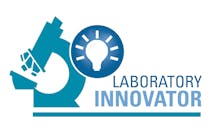New study seeks to combat national kidney shortage, improve availability for organ transplants
With a nearly $1.5 million R01 grant, Ellen Green, associate professor in Arizona State University's College of Health Solutions, aims to better understand the decision-making process that moves organs through to be transplanted.
Green, the principal investigator on the project, and partners Glenn Dutcher from the University of North Carolina at Charlotte, Darren Stewart from New York University and Jesse Schold from University of Colorado Anschutz Medical Campus, are working to investigate the factors influencing clinicians’ decisions to accept or decline viable kidneys.
Their study is the first to investigate the differences between individual decision-making processes from clinician to clinician, presenting an important opportunity to address a national challenge.
"Ultimately, we want to understand if there are different decision processes at the human level. Are there differences in how doctors think about their patients and how they think about accepting these deceased donor kidneys on behalf of their patients?" Dutcher said.
Dutcher’s expertise in risk preferences and decision-making processes offers key insights into why clinicians accept or reject certain donor kidneys.
Green’s team utilizes unique decision-making data from two contexts — within a lab and in the field — to link survey data to retrospective clinician decision-making.
“By doing so, we can better understand how factors like experience, risk aversion and decision-making heuristics contribute to variability and, ultimately, design policies that account for the nuances of individual decision-makers,” Green said.
The researchers found that despite uniformity between demographics and center resources, clinician acceptance rates can vary significantly — and even at the center level, decision-making can present uniformly or with considerable variation. According to Green, the study suggests that factors involved in this decision-making relate to “individual risk tolerance, experience with complex surgeries and training.”
From clinician to clinician, the willingness to accept a donor kidney may come down to experience. A more experienced clinician may be more willing to accept a donor kidney based on their time working with more complex cases, as opposed to a more inexperienced clinician, who may opt to take a more conservative approach.
“To truly optimize organ allocation, we need to incorporate individual decision-making patterns into our models. Otherwise, we risk missing opportunities to place kidneys with clinicians who are both willing and able to accept them, ultimately reducing the potential for more successful transplants,” Green said.
Now, in the first year of their four-year R01 grant, they can look into how the differences between clinician decision-making strategies affect the patient population and pave the way to advising on policy that leverages this decision-making.
Green plans to conduct further research to concretely establish the policy changes necessary to minimize nonuse rates across centers.
Using interventions such as evidence-based clinical decision-support tools in the allocation process or establishing assessments to understand the relationship between acceptance patterns and patient outcomes, the team can work to create better procedures that target the reasons for hesitation when deciding whether to accept or reject a kidney.
“Transplant centers can use our findings to consider root causes for the variations we found, and to decide if there are ways to reduce those variations,” Green said. “This is particularly important when evidence suggests that conservative acceptance practices can jeopardize transplant success and patient health.”





